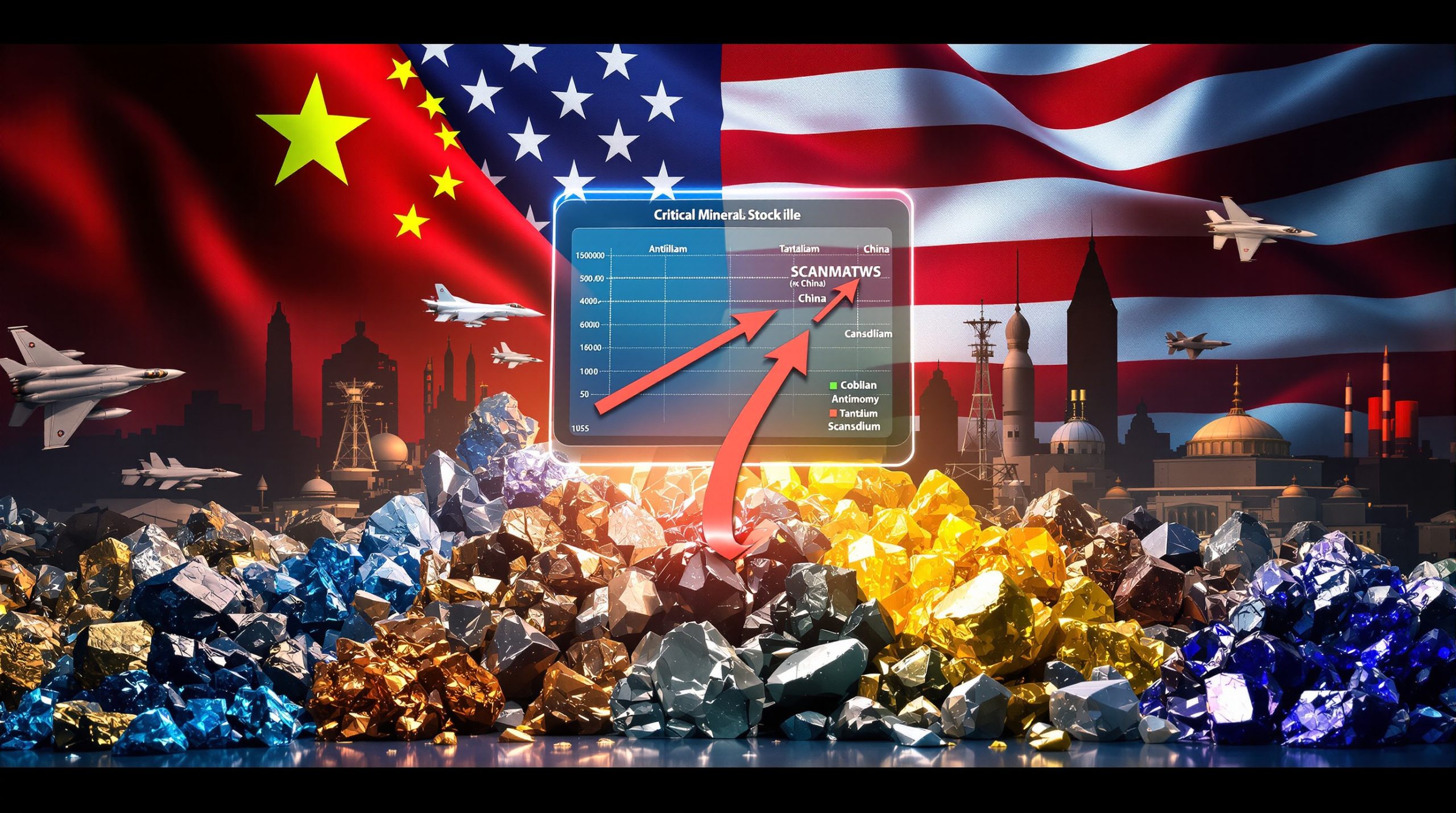Understanding the Two-Speed Zinc Market: Global Dynamics and Export Opportunities
The zinc market is experiencing a significant divergence between Chinese and global conditions, creating what industry analysts call a "two-speed market." This unusual situation has emerged from contrasting supply-demand fundamentals in China versus the rest of the world, leading to price disparities that may soon trigger cross-border metal flows. The current two-speed zinc market dynamics are also being influenced by broader mining industry trends that are reshaping resource sectors globally.
Defining the Two-Speed Phenomenon
The zinc market is currently split between:
- Chinese market: Characterized by growing production, record ore imports, and weakening domestic demand
- Global market: Experiencing tightening inventories, reduced smelter output, and relatively stronger demand
This divergence creates pricing opportunities and potential trade flows that could reshape the global zinc supply chain in the coming months.
How Do Chinese and Global Zinc Markets Compare?
Chinese Zinc Market Conditions
China's domestic zinc market faces several challenges despite production increases:
| Chinese Zinc Market Metrics | Current Status (2025) |
|---|---|
| Production level | 17-month high (August 2025) |
| Ore imports | Record levels |
| Domestic demand | Weakening |
| Price trend | Relatively depressed |
| Inventory situation | Building |
The weakness in Chinese zinc demand stems primarily from:
- Prolonged property market crisis affecting construction
- Slowing broader economic activity
- Reduced steel galvanizing requirements (zinc's primary use)
Global Zinc Market Dynamics
Outside China, the zinc market presents a contrasting picture:
| Global Zinc Market Metrics | Current Status (2025) |
|---|---|
| LME inventories | Lowest in over two years |
| Price trend | Recently topped $3,000/ton (first time since January 2025) |
| Smelter activity | Reduced output |
| Market structure | Backwardation (cash prices higher than futures) |
The backwardation in the LME zinc market reached over $40 per ton in September 2025, the highest since October 2024, signaling immediate supply tightness. According to LME zinc data, these inventory patterns reflect growing concerns about supply availability outside China.
Why Are Price Differentials Creating Export Opportunities?
The Widening Price Gap
The price differential between global and Chinese markets has reached significant levels:
- The ratio between LME and SHFE zinc prices has stretched to its widest in more than two years
- This gap is approaching the threshold that would make exports from China economically viable
- Chinese producers and traders are actively monitoring this situation for export opportunities
Historical Context of Chinese Zinc Exports
Chinese zinc export patterns show significant volatility based on global market conditions:
| Period | Monthly Export Volume | Triggering Factors |
|---|---|---|
| Normal conditions (2025) | ~1,200 tons | Balanced markets |
| May 2022 spike | >35,000 tons | Russia-Ukraine conflict, energy crisis, global smelter closures |
The current market conditions are beginning to resemble those that previously triggered export surges, suggesting potential for increased Chinese zinc shipments in the near term. This situation mirrors similar patterns seen in the copper price prediction markets, where regional disparities create trade opportunities.
How Might Chinese Zinc Exports Unfold?
Export Mechanisms and Logistics
Several pathways exist for Chinese zinc to enter global markets:
- Direct exports to consuming countries
- LME warehouse deliveries, particularly to newly opened facilities in Hong Kong
- Semi-finished product exports containing zinc (circumventing potential raw material export restrictions)
Major Chinese zinc producers and trading houses are reportedly preparing for export opportunities, with logistics arrangements being established in anticipation of favorable price differentials.
Regulatory and Trade Policy Considerations
Export flows will be influenced by several policy factors:
- Chinese export policies and potential restrictions
- Destination country import tariffs and trade measures
- LME warehouse regulations and delivery procedures
- Transportation costs and logistics constraints
The tariffs impact markets significantly, potentially creating or closing arbitrage windows for zinc traders operating between regions.
What Are the Global Implications of the Two-Speed Zinc Market?
Price Convergence Mechanisms
The two-speed market is unlikely to persist indefinitely, with several potential adjustment mechanisms:
- Export window opening: Chinese material flowing to global markets
- Production adjustments: Smelters responding to price signals
- Demand shifts: Industrial consumers adjusting purchasing patterns
- Arbitrage activities: Traders capitalizing on regional price differences
As noted by analysts at Zijin Tianfeng Futures: "The likelihood of reversion is high, either by the opening of the export window or through better margins for refineries outside China."
Impact on Different Market Participants
The evolving zinc market dynamics will affect stakeholders differently:
| Market Participant | Potential Impact |
|---|---|
| Chinese producers | Export opportunities, but potential domestic price pressure |
| Global consumers | Possible price relief if Chinese exports increase |
| Non-Chinese producers | Margin pressure if global prices decline |
| Traders | Arbitrage opportunities between markets |
What Factors Are Driving Zinc Demand Globally?
Sectoral Demand Patterns
Zinc demand varies significantly across industries and regions:
-
Galvanized steel production (primary use)
- Construction sector requirements
- Automotive manufacturing needs
- Infrastructure development projects
-
Die-casting applications
- Consumer electronics
- Industrial components
- Automotive parts
-
Other applications
- Brass and bronze alloys
- Chemical compounds
- Agricultural products
Regional Demand Variations
Zinc consumption patterns differ markedly across major economies:
- China: Weakening demand due to property sector issues and economic slowdown
- Europe: Relatively stable but challenged by manufacturing weakness
- North America: Stronger performance supported by infrastructure spending
- Emerging markets: Mixed picture with infrastructure development supporting demand
The US–China trade war impact continues to influence metals markets, including zinc, by altering traditional trade flows and creating new price dynamics.
How Are Zinc Production Trends Evolving?
Global Production Landscape
Zinc production capacity is distributed unevenly across regions:
| Region | Production Trend | Key Drivers |
|---|---|---|
| China | Increasing | Strong ore imports, capacity expansion |
| Europe | Decreasing | Energy costs, environmental regulations |
| Americas | Stable | Balanced market conditions |
| Australia | Stable to increasing | New project development |
Mine Supply vs. Smelter Output
The zinc supply chain shows different dynamics at mining versus refining stages:
- Mining segment: Generally expanding globally with new projects
- Smelting segment: Constrained outside China due to energy costs and environmental factors
- Regional imbalances: Ore increasingly flowing to China for processing
Similar production challenges are being observed in the iron ore forecast sector, where supply chain imbalances create regional pricing disparities.
What Are the Key Price Drivers for Zinc in 2025?
Current Price Determinants
Several factors are influencing zinc prices in the current market:
- Physical market tightness outside China
- Exchange inventory levels (particularly LME)
- Chinese economic performance and stimulus measures
- Energy costs for smelters
- Global manufacturing activity
- Trade policies and export/import regulations
Price Outlook Scenarios
The zinc market faces several potential scenarios in the coming months:
| Scenario | Trigger | Likely Price Impact |
|---|---|---|
| Chinese export surge | Price gap widens further | Global price moderation |
| Continued two-speed market | Regulatory barriers to exports | Sustained price divergence |
| Global demand recovery | Economic stimulus success | Convergence at higher price levels |
| Chinese demand improvement | Property sector stabilization | Convergence with limited exports |
How Do Zinc Market Fundamentals Compare to Other Base Metals?
Cross-Metal Comparisons
Zinc's market structure differs from other base metals in several ways:
| Metal | Current Market Structure | Inventory Situation | China vs. Global Dynamic |
|---|---|---|---|
| Zinc | Two-speed, backwardation | Low globally, higher in China | Divergent |
| Copper | Relatively balanced | Moderate | Less divergent |
| Aluminum | Oversupplied | Building | Convergent |
| Nickel | Oversupplied | High | Convergent |
These differences reflect varying industry structures, demand patterns, and production economics across the base metals complex. According to Trading Economics data, zinc's price volatility has been particularly notable compared to other metals.
What Should Market Participants Watch for Next?
Key Indicators to Monitor
Several metrics will signal how the two-speed zinc market evolves:
- LME-SHFE price ratio: Indicator of export economics
- Chinese export statistics: Monthly volumes indicating actual flows
- LME warehouse stock movements: Particularly in Asian locations
- Chinese property market data: Leading indicator for domestic demand
- Global manufacturing PMIs: Broader demand indicator
- Energy prices in Europe: Impact on non-Chinese smelter economics
Strategic Considerations for Different Stakeholders
Market participants should consider several strategic responses:
- Consumers: Evaluate sourcing strategies and inventory policies
- Producers: Assess production economics and hedging approaches
- Traders: Prepare for potential arbitrage opportunities
- Investors: Consider implications for mining and smelting equities
FAQ: Understanding the Zinc Market Dynamics
Why is the zinc market described as "two-speed"?
The term "two-speed" refers to the divergent conditions between China (characterized by growing production, weaker demand, and lower relative prices) and the rest of the world (experiencing tighter supply, stronger demand, and higher prices). This creates different market velocities and directions in different regions.
What would trigger increased zinc exports from China?
Exports become economically viable when the price differential between international and domestic markets exceeds transportation, insurance, and tariff costs. The current LME-SHFE price ratio is approaching but hasn't quite reached this threshold. Any further widening of the gap would likely trigger exports.
How does zinc's primary use affect its market dynamics?
Zinc's primary use in galvanizing steel creates a strong connection between zinc demand and construction activity, infrastructure development, and automotive production. China's property market downturn has significantly impacted domestic zinc consumption, creating the current supply-demand imbalance.
What role do LME warehouses in Hong Kong play in the zinc market?
The LME's newly opened warehouses in Hong Kong provide a convenient delivery point for Chinese metal. These facilities could become a significant destination for Chinese zinc if the export window opens, serving as a bridge between Chinese supply and global demand.
Looking for an Edge in ASX Mining Investments?
Discovery Alert's proprietary Discovery IQ model delivers instant notifications on significant ASX mineral discoveries, transforming complex data into actionable investment insights for both short-term traders and long-term investors. Visit our discoveries page to understand why major mineral finds can generate substantial returns and begin your 30-day free trial today.




